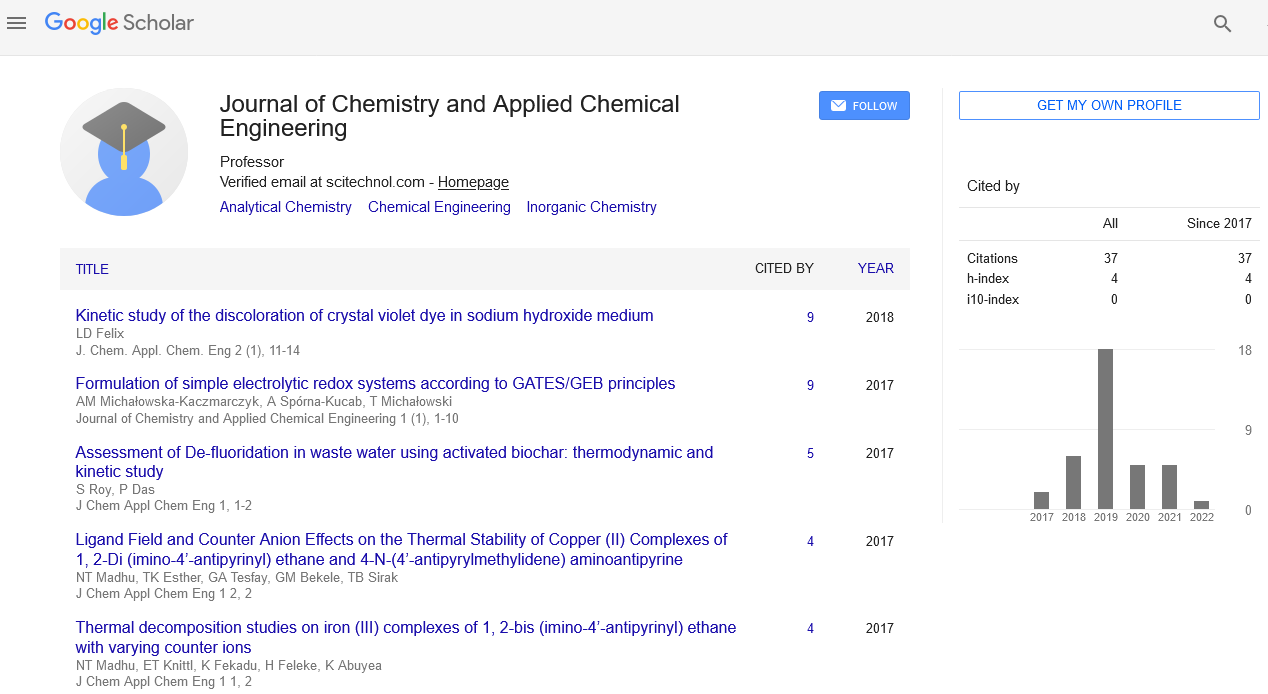Thermomechanical reactions for thermoelasticity and superelasticity In shape memory alloys
Osman Adiguzel
Firat University, Turkey
: J Chem Appl Chem Eng
Abstract
Shape memory alloys take place in a class of adaptive structural materials called intelligent or smart materials by giving stimulus response to changes in the external conditions. These alloys are functional materials with these properties and used as shape memory elements in many interdisciplinary fields. These alloys exhibit dual characteristics, shape memory effect and superelasticity, with chemical compositions in ß-phase regions. with the recoverability of two shapes at different conditions. Shape memory effect is initiated with thermomechanical treatments cooling and deformation and performed thermally on heating and cooling, with which shape of materials cycles between original abd deformed shapes in reversible way. Therefore, this behavior can be called thermoelasticity. Deformation in low temperature condition is plastic deformation, with which strain energy is stored in the materials and released on heating by recovering the original shape. This phenomenon is governed by the thermomechanical and thermoresponsive reactions, thermal and stress induced martensitic transformations. Thermal induced martensitic transformations occur on cooling with cooperative movement of atoms in <110 > -type directions on {110} - type planes of austenite matrix, along with lattice twinning, and ordered parent phase structures turn into twinned martesite structures. The twinned structures turn into detwinned martensite structures by means of stress induced martensitic transformations with deformation. On heating these alloys following these treatments, detwinned martensite structures turn into the ordered parent phase structures, by means reverse austenitic transformation. Twinned structures are result of lattive invariant shears on {110} - type planes of austenite matrix. Superelasticity is performed with mechanically stressing and releasing the material in elasticity limit at a constant temperature in the parent austenite phase region, and shape recovery occurs instantly and simultaneously upon releasing by exhibiting elastic material behavior. Superelasticity is also result of stress induced martensitic transformation, with which the ordered parent phase structures turn into the detwinned martensite structures with stressing. Superelasticity is performed in non-linear way, unlike normal elastic materials behavior, loading and releasing paths are different, and cycling loop refers to the energy dissipation.
Biography
Dr. Adiguzel graduated from Department of Physics, Ankara University, Turkey in 1974 and received PhD- degree from Dicle University, Diyarbakir-Turkey. He has studied at Surrey University, Guildford, UK, as a post- doctoral research scientist in 1986-1987, and studied were focused on shape memory effect in shape memory alloys.
 Spanish
Spanish  Chinese
Chinese  Russian
Russian  German
German  French
French  Japanese
Japanese  Portuguese
Portuguese  Hindi
Hindi 